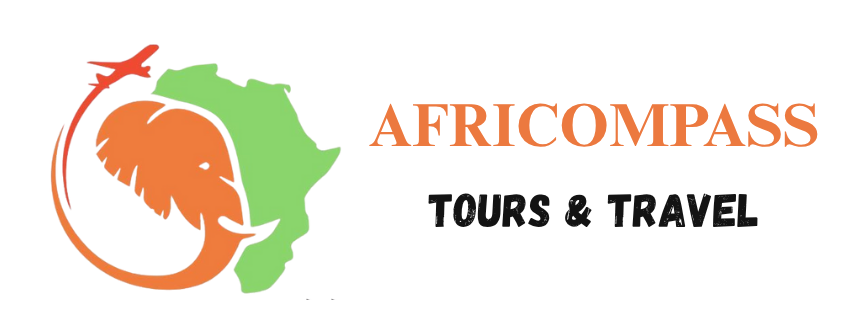What are the 3 types of Itineraries that you can bank and budget on? Well, there are more than 3. When it comes to planning a trip, an itinerary is your blueprint for a successful and enjoyable journey.
An itinerary outlines your travel plans, ensuring that you make the most of your time and experiences. Depending on your travel preferences and interests, there are different types of itineraries to consider.
There are different types of Itinerary depending on a tour agency:
It is very important that these itineraries serve different purposes and cater to various stakeholders involved in travel planning.
In this piece, we’ll as well delve into three unique types of itineraries that are offered by Africompass Travel, Plentiful Adventures, Cherish Africa Safaris, Noni Golfing Safaris and Magical Retreat Adventures. These include flying itinerary, road itinerary, and luxury itinerary. Each type offers unique benefits and caters to different styles of travel. Whether you’re a time-conscious traveler, an adventurer on wheels, or someone who enjoys the finer things in life, there’s an itinerary for you.
A flying itinerary is centered around air travel, allowing you to cover long distances quickly and efficiently. This type of itinerary is perfect for travelers who want to maximize their time at multiple destinations, especially those that are far apart.
5 Days Kenya Classic Flying Package offered by Africompass Tours and Travel
1.Time-Saving: Flying is the fastest mode of travel for long distances, enabling you to spend more time exploring your destinations rather than in transit.
2.Convenience: Airports are well-connected to major cities worldwide, making it easy to plan trips that span across continents.
3.Versatility: A flying itinerary can be combined with other types of travel, such as road trips or luxury experiences, to create a well-rounded vacation.
Book Flights in Advance: To secure the best prices and flight times, it’s advisable to book your flights several months ahead of your trip.
Consider Layovers: When planning your flights, consider layovers that allow you to explore additional cities. Some airlines offer free extended layovers, providing a bonus mini vacation.
Plan Transfers: Ensure that you have a clear plan for airport transfers to and from your accommodations to avoid any last-minute hassles.
A road itinerary is ideal for travelers who enjoy the freedom of the open road and the flexibility to explore destinations at their own pace. Whether you’re embarking on a cross-country adventure or a scenic drive through picturesque landscapes, a road itinerary offers a unique travel experience.
1. Flexibility: Unlike fixed flight schedules, a road trip allows you to change plans on the go, exploring off-the-beaten-path destinations as you please.
2. In-Depth Exploration: Traveling by car gives you the opportunity to delve deeper into regions, discovering hidden gems and local culture that you might miss when flying.
3. Comfort and Convenience: Having your vehicle means you can pack more and travel comfortably without the restrictions of airline baggage limits.
Map Out Routes: Use mapping tools to plan your route, taking into account scenic byways, major highways, and potential detours for interesting stops.
Consider Pit Stops: Plan regular breaks for meals, sightseeing, and rest to ensure a pleasant and stress-free journey.
Pack Essentials: Make sure your car is stocked with road trip essentials, including snacks, water, a first aid kit, and a spare tire.
For travelers who seek an opulent and indulgent experience, a luxury itinerary is the way to go. This type of itinerary is characterized by upscale accommodations, fine dining, and exclusive activities that cater to a more discerning traveler.
1. Exclusive Experiences: Enjoy private tours, VIP access to attractions, and personalized services that elevate your travel experience.
2. Luxurious Accommodations: Stay in high-end hotels, resorts, or villas that offer top-notch amenities and exceptional service.
3. Gourmet Dining: Savor exquisite meals at renowned restaurants, often with the option of curated tasting menus and wine pairings.
Research Luxury Travel Providers: Look for travel agencies and tour operators that specialize in luxury travel to help plan your trip.
Set a Budget: Luxury travel can be expensive, so it’s important to set a budget and prioritize the experiences that matter most to you.
Prioritize Experiences: Choose activities and services that align with your interests, whether it’s a private yacht charter, a spa retreat, or a cultural immersion.
In summary, the type of itinerary you choose can greatly influence your travel experience. A flying itinerary is perfect for covering vast distances quickly, a road itinerary offers flexibility and deeper exploration, and a luxury itinerary promises exclusive and indulgent experiences. When planning your trip, consider your preferences and interests to select the itinerary that best suits your needs. Thorough planning and research are essential to ensure a memorable and enjoyable travel experience. Happy travels!

 Get Support!
Get Support!